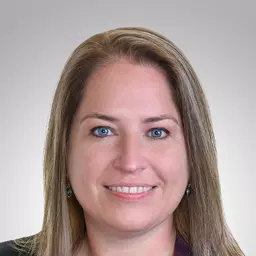Mission-Driven Multifamily in Nashville: A Conversation with Jesse Lemos and William Rhett

Financing experts for the multifamily and affordable housing sectors, Jesse Lemos and William Rhett bring years of experience and deep insights into the complex dynamics of housing affordability. With a commitment to advancing mission-driven multifamily real estate, they strive to help borrowers discover the affordability of their projects which will help address the pressing need for affordable housing solutions.
Here, they dive into the defining characteristics of mission-driven multifamily developments, discussing the importance of these projects and distinguishing them from more traditional projects. Their expertise provides a comprehensive look at how such initiatives can enhance accessibility, affordability and sustainability within local housing markets, ultimately contributing to the betterment of communities.
How do you define "mission-driven" multifamily real estate, and what distinguishes these from traditional projects?
Jesse Lemos: Mission-driven multifamily is a much-needed product in the U.S. First, rents for these properties are priced below the 80% area median income (AMI) threshold, which changes per census tract. Second, affordable housing is a necessity due to housing prices reaching the highest levels in history. First-time home buyers are still struggling to come up with the down payment for their purchase, but having the ability to save due to the affordability of their apartment might assist these renters with the purchase of their home.
William Rhett: Mission-driven projects fall into a few multifamily categories, but it really centers around the availability of units at the 80% AMI or below threshold, as Jesse mentioned. The more units that are affordable to renters at this threshold the higher the “mission-driven” aspect of a project. Typically, these projects have below-market to average rents in high earning areas. High-mission-driven projects are crucial to providing affordable housing to all. By providing a high-mission-driven project, owners of multifamily are awarded with the best terms in the market from Fannie Mae, Freddie Mac and FHA.
In what ways can these projects help promote accessibility, affordability and sustainability within the local housing market?
Jesse Lemos: In many cities that run on tourism and services – such as music, hotel, bars and restaurants – those workers typically do not have the required incomes to live anywhere close to where they work. If there were more affordable apartments in and near these central business districts, then communities, economies and their lifestyles would improve due to accessibility.
William Rhett: I’d add that high-mission projects are usually older projects in great areas. Developers need to be more incentivized to build new projects that fit within a high-mission framework. Lower-income workers should have the same opportunity to live and work in great areas of town.
How do mission-driven multifamily developers engage with local stakeholders and residents to understand and address community needs?
Jesse Lemos: While most developers understand the market needs, they more often build market-rate projects, as buyers often don’t want to worry about AMI issues in the future. However, developers will work with cities that have defined mission-driven housing programs. For instance, a new program was recently rolled out in Nashville and one of the options requires 40% of the units to be at 75% AMI – this is a 15-year program and with that commitment, the developer/owner’s incentive is a 70% to 80% real estate tax (RETax) reduction over the initial ten years, followed by a 50% to 60% reduction for the next five years. The RETaxes will be fully assessed back to 100% in year 16 unless the owner reapplies for an additional 15-year term, which can be done after year ten of the initial term.
William Rhett: Yes, tax reduction is the biggest way to incentivize developers and owners to continue with high-mission-driven projects. Investors need to meet minimum returns, and typically they will not voluntarily build affordable projects without help from city or government programs.
What opportunities and challenges should developers, lenders and/or owners expect when building or buying mission-driven multifamily projects?
Jesse Lemos: Mission-driven multifamily is what Fannie Mae and Freddie Mac strive to lend on. For these properties, spreads get reduced, more interest-only financing is available, and amortization can also increase to 35 years in some cases. All these benefits amount to more proceeds for the borrower whether it’s an acquisition or a refinance. Fannie Mae and Freddie Mac both have programs that offer some of these terms if at least 20% of the units are marked for 80% AMI. That program is in place for six out of seven years, or nine out of ten years, depending on loan term.
William Rhett: I second what Jesse says. The best possible financing terms are available when projects target affordability, but challenges are incurred when operators must maintain a certain number of affordable units. Several of the best Fannie Mae and Freddie Mac loan options have strict language in loan agreements; if these covenants are broken, there can be penalties.
How can local governments, nonprofits and private developers collaborate to further encourage the growth of mission-driven multifamily real estate developments for the betterment of communities?
Jesse Lemos: Local authorities could be getting more creative on how to implement multiple types of strategies for developers and/or current owners to reduce RETax burdens or anything else that can reduce costs. Cities could offer something such as vouchers to musicians, bartenders, hotel employees or others working in similar industries. Another potential solution could involve repairs and maintenance turnovers, where cities cover the turnover cost to rent the unit to another renter in the same 80% AMI category.
William Rhett: Unfortunately, most developers would not cater to a high-mission project without incentives from local governments. New high-mission projects do not underwrite without a reduction in tax burden, so the city needs to identify areas where they want affordable housing and broadcast the leverages of following their guidelines. I believe that the advantages of high-mission projects are not understood well enough by developers and investors.
What successful projects come to mind that help address the need for mission-driven multifamily projects in Nashville?
Jesse Lemos: The Edgehill neighborhood is a fantastic area that illustrates what’s possible when developers, residents and local authorities work together. About a mile from 12 South and adjacent to Music Row, Edgehill is a 560-acre neighborhood that is experiencing significant development, while making sure the community’s culture and history are preserved and enhanced.
William Rhett: Yes, Edgehill is one of the top examples in Nashville. There are over 3,200 apartment units approved for development in the area that will add a variety of housing options. Affordable and subsidized units combined with mixed-income housing will be added, along with complementary retail, office and other commercial space. The neighborhood already has one low-income housing tax credit (LIHTC) project along with other projects in the works that may have affordable components. This area has really become a priority for the city of Nashville in terms of growth and development.
Insights
Research to help you make knowledgeable investment decisions


